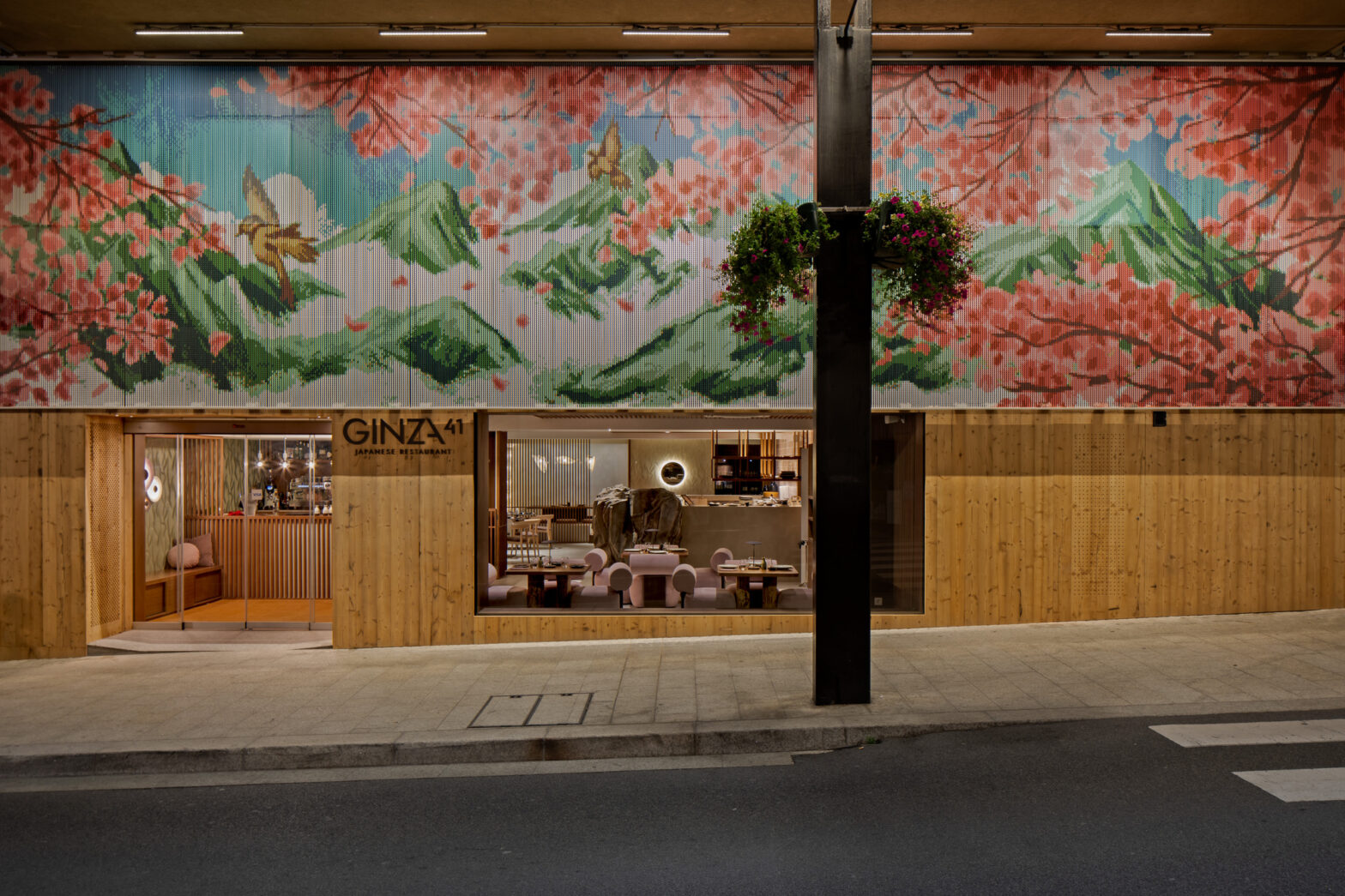Thanks to the creative manipulation of common building materials and researching elements such as shape, light, texture and space, the architecture only exceed functions to become an artistic expression. Whether the boldness of an innovative design, the harmony of balanced dimensions or the impressive use of materials, a building can turn into a work of art that inspires, fascinates and evokes emotions. The design of the Ginza 41 Sushi restaurant, which was designed by the architect àfrica Sabé, illustrates this approach. Thanks to the solutions from Kriskadecor, a company that specializes in tailor -made metallic cladding, the facade is noticeable in its area. By using a tense chain facade system that shows a unique design, the project defines the integration between architecture and visual branding.
Ginza 41 in Andorra was already a well -established restaurant, and his renovation aimed to keep his essence and at the same time take a desired feeling of innovation into account. The new room not only reserves traditional elements from the original restaurant, but also performs a facade that captivates passers -by and establish itself as a urban landmark.
The facade was measured with a wide width of 13.7 meters and a height of 3.4 meters and was designed as a visual composition with a high impact, which was achieved by using a high-resolution Japan-inspired image. With 15 RAL colors, which are applied by a special epoxy coating, the installation harmonizes with the wood structure of the building and forms a balanced interaction between the metallic material and the natural elements.
According to àfrica Sabé, the idea of involving aluminum chains in the facade came from the image of traditional chain curtains that were found in old family houses. These chains are reminiscent of holidays, good food and a feeling of calm. We also wanted to establish these feelings, while we also create a connection with Japan, which awaits an experience in experience in experience. “
A light, flexible and strong structure: the KDO -proof system
The functionality was a crucial factor when choosing the chain curtains of Kriskadecor. The solution required to overcome considerable technical challenges, e.g. In order to meet these requirements, the KDO -proof system was selected. With this system, large surfaces can be covered with tense chains, which creates personalized visual effects and at the same time ensure both ventilation and structural stability. It offers a light but permanent structure that is able to cover extensive areas. Its adaptable technology – including dimensions, shapes, colors and reproduction of images and patterns – sets the creation of dynamic facades, which despite its solid appearance and privacy offer from outside, while maintaining a visual connection with the outside environment. In addition, the system reduces the transmission of direct solar radiation and enables adequate ventilation.
Another important technical advantage of this solution is resistance to undesirable environmental conditions. It was developed to withstand the wind pressure of more than 210 km/h and is a permanent option for outdoor applications. Its lightness and flexibility not only make installation easier, but also minimize long -term maintenance costs. In addition, the aluminum used in the system is 100% recyclable, which increases the company's commitment to sustainability.
The collaboration between Sabé, Kriskadecor and engineering office Auxini was important to bring this project to life. The specialist knowledge of Kriskadecor in the manipulation of aluminum and the use of digital technology to create custom visual patterns played a decisive role in achieving the desired result. The Ginza 41 project illustrates how architectural design can go beyond aesthetics in order to become a powerful tool for identity and user experience. The combination of àfrica Sabé's vision with the technical know -how from Kriskadecor led to a solution that is not only visually noticeable, but also meets the essential technical requirements. This visual effect strengthens the identity of Ginza 41 and contributes to the urban landscape and establishes a new landmark in the city.
